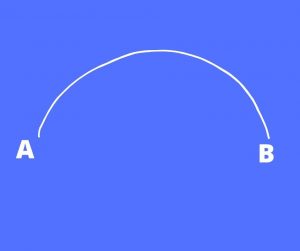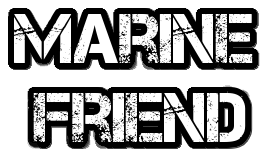MARINE FACTS
SHIPS don’t travel in a STRAIGHT LINE why?

SHIPS don’t travel in a STRAIGHT LINE why?
when we travel from one country to another, our ships don’t travel in a straight line.
Ships don’t travel in a straight line.
This is especially true when two countries or cities are far apart.
For example, our route from Gibraltar to Florida, Miami doesn’t look like this.
Instead, it looks like this.
Surprised?
Believe me when I say this makes our route shorter, and we save a lot of fuel.
If I were to give you an example, our route from Gibraltar to Miami in a straight line is 3,933 NM, and it takes us 13.07 days.
But if you curve this route, the route is shortened to 3840 NM or 12.79 days.
This curved route not only saves 82 miles and 7 hours but also saves 14.5 tonnes of fuel too.
In other words, $10K or 17,90,000 PKR saved.
It’s really important to save, too. Not only do we follow this strategy, but pilots also use this strategy as well.
Whenever planes travel from one city to another, they also follow a curved route.
The reason behind this is the route is how the earth is made, we’re basically following the shape of the earth, to shorten our trips, and
save our fuel and money.
I’ve said this before, the earth is round.
Not only is it round, but it’s also flattering at the poles.
It looks like someone tried to flatten it.
And towards the equator, the earth slightly budges out.
And since the earth has mountains, rivers, peaks, and lows, we can’t exactly call it a sphere.
We instead refer to it as a spheroid.
Not exactly round, but nearly round.
Take a ball, for example, think of this seam as the equator, now let me add two points, A and B, to you, the shortest route from one
point to another will look like straight,
like I simply drew a straight line on the ball.
It may look like a straight line, but let me tell you that this line isn’t straight.
I mean you’re traveling around a ball that’s round, if you assume a straight line on the ball, won’t really be straight.
You may constantly have to change your ship’s heading.
That way, you’ll be following a “straight” line.
Now if you draw the same straight line on the ball on paper,
it won’t be straight anymore, If you pick this curve up and place it flat, the distance here will be longer, then it will shorten from here until it’s zero.

SHIPS don’t travel in a STRAIGHT LINE why?
It’s not easy to take a straight line on a ball and flatten it.
But when you do transfer it and consider the lines equal in size to the equator, placing it in longitudes, the line starts to take a curved form.
That’s mainly why all maps are in 2D, but the earth isn’t two-dimensional, it’s three-dimensional.
There’s the Y-axis and the Z-axis.
Depicting the shape of the earth on a flat surface, you can check Google Maps, or if you travel internationally, notice this then, the flight path seems curved because a path normally looks straight on a curved surface is actually the shortest distance between two points.
But you must think that if it’s straight, why do I keep having to change my ship or plane’s heading?
Again we have the same answer, the earth is round.
To counter the earth’s round shape, to follow it, you keep having to change your headings.
It may seem like you’re following an irregular, curved line on a straight surface, but on a rounder surface, it will look like a straight line.
Second, when you’re in the northern hemisphere, that’s half of the earth towards the north, the curve of your path leans towards the north, like that. But when you’re in the southern hemisphere, that same line will curve southwards.
It won’t be towards the north.
Because if you flip it, directing your track in the northern hemisphere towards the southern hemisphere, and vice versa, your distance will increase, and we don’t want that.
We have to follow the earth’s shape.
If I were to explain this in detail, This distance from point A to B is the arc of a great circle.
Now you’re probably wondering what a great circle is. Let me tell you.
Take any sphere or round surface, and make a circle on it in a way that the drawn circle’s center and the actual circle’s center align, then all the circles are called great circles.
If you create a circle on this ball, for example, that doesn’t align with its center, that’s called a small circle.

SHIPS don’t travel in a STRAIGHT LINE why
Ships don’t travel in a straight line
The earth has latitudes and longitudes, the latitudes that follow the equator line, and the longitudinal lines that go from one pole to another.
All longitudes are great circles, as for latitudes, it’s only the one over the equator lines that’s a great circle, The rest are small circles.
If we ignore latitudes and longitudes for a second, the earth’s surface – I’m referring to this ball as the earth, we can pass countless circles that
coincide with the earth’s center, so when you follow the arc of a great circle, you’re shortening your distance from point A to B.

SHIPS don’t travel in a STRAIGHT LINE why
Ships don’t travel in a straight line
You don’t only have to follow a curve, you have to calculate a great circle, and when you travel the arc of the great circle you’ve calculated.
You can’t just draw any circle and follow any path, you’d be doing everything wrong.
You have to use formulas to calculate your initial and final course from point A to point B.
And wherever your course line intersects, you’ll have to change your heading constantly.
Now it’s a great circle, and by the book, you have to keep changing headings, but we don’t keep changing headings constantly, we’d have to do that all day.
What we do is every 5-degree longitude, we establish a waypoint, and follow the great circle track. We call it the composite great circle track.
So whenever it’s possible, we try to find out the great circle track and follow it.
I said “whenever it’s possible” because
we can’t do this all the time because of restrictions.
Here’s an example, if the distance between two countries is short, that no matter if you follow the great circle or the rhumb-line (a straight track).
If it’s only a 1-mile difference when travelling the “longer” route, we don’t bother to find out the great circle track.
In some cases, a great circle track can get disrupted by land in between.
We can’t obviously travel overland.
That way we have to alter our course to stay away from land.
We don’t always have to follow a great circle track, but whenever it’s possible we do try to follow it to save our fuel and money, distance, and time.
And this is why we follow a great circle track, and why we don’t follow a straight line when traveling from one country to another.
Until my next post, take good care of yourselves,
always remember me in your prayers.
ALSO READ: Important links for Indian seafarers
-

 SEAFARERS4 years ago
SEAFARERS4 years agoBsid dg shipping email id and contacts
-

 SEAFARERS4 years ago
SEAFARERS4 years agocommerce se merchant navy kar sakta hai kya?
-

 RPSL4 years ago
RPSL4 years agoBlacklisted RPSL companies 2021/2022/PART-2
-

 COLLEGES4 years ago
COLLEGES4 years agoGp rating college list approved by dg shipping in india
-

 PSCRB2 years ago
PSCRB2 years agoPSCRB exit Exam MCQ-1
-

 RPSL4 years ago
RPSL4 years agoBlacklisted RPSL companies 2021/2022/PART-1
-

 RPSL4 years ago
RPSL4 years agodg shipping approved company
-

 RAFF2 years ago
RAFF2 years agoRefresher AFF Exit exam Questions and Answers PDF 1








